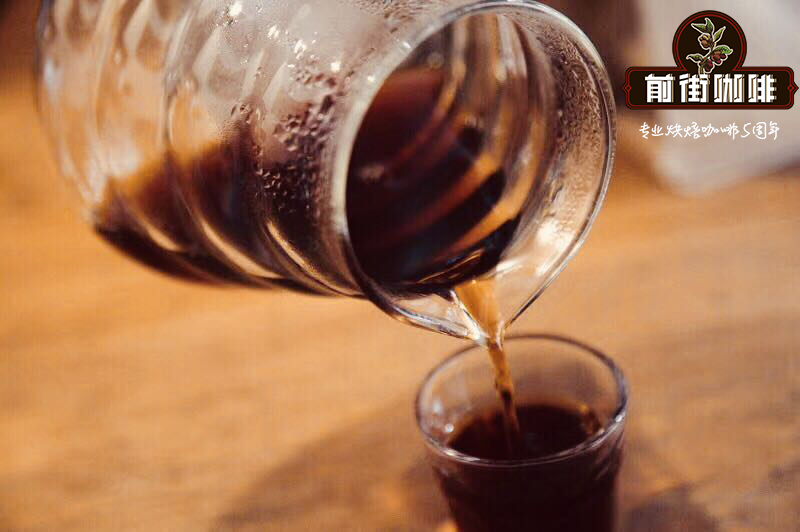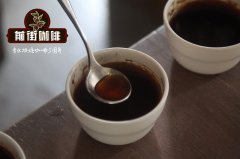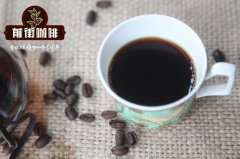Vietnam Coffee Origin introduction _ Vietnam G7 Coffee where to buy _ what are the brands of Vietnamese Coffee

Professional coffee knowledge exchange more coffee bean information please follow the coffee workshop (Wechat official account cafe_style)
When it comes to the origin of coffee, Vietnam does not seem to have the top beans in the world, but in terms of world coffee output, Vietnam has always been the leader in terms of world coffee output. In recent years, Vietnam has not only firmly ranked in the top several, but also jumped to become the world's largest coffee exporter in 2012, surpassing Brazil, which has always been the world's largest exporter.
The territory of Vietnam is long and narrow, and the climate varies greatly from south to north due to latitude and topography.
Because of the temperate climate in the northern mountains, Arabica can be planted in the north, but the yield is not much.
The southern part of the country has a tropical monsoon climate, mainly planting Robusta, which is also the main export force of Vietnamese coffee. As long as the coffee production season arrives, the whole piece will be seen.
In the past, Robasta, the main force in the cultivation of coffee beans in Vietnam, had a popular flavor, but it was easy to grow and did not need to be taken care of carefully. in addition, the technology of ordinary Vietnamese coffee farmers was not high, so the quality of Luodou produced was naturally poor and the flavor was not good, so it was widely used to roast until the end of the second explosion, and the beans did not come out until they were scorched black and oily on the surface. The beans are severely carbonized, leaving only the bitter smell of coffee, and in order to increase the aroma, they are roasted with cream, so Vietnamese beans have a strong creamy aroma and a creamy sticky feeling in their hands, but this still doesn't make the coffee delicious, if you hold a bean in your mouth.
Vietnam will grow Luoda out of a large banking project aimed at bringing Vietnam into the global economy. However, due to the poor quality, the market is flooded with a large number of cheap Vietnamese beans, which once plunged the world into a coffee price crisis. (this passage is from Dean. Saikang's work: dispatch from Coffee producing areas: X40,000 km in 9 countries, a traceability record of a human rights lawyer. )
The taste of beans is not good, it is difficult to bite the throat, and the income of Vietnamese civilians is generally not high. It is an M-shaped society. The most economical and simple seasoning method is to add condensed milk to cover up the shortcomings of poor flavor of beans. That is today's unique way of drinking Vietnamese coffee.
The culture of drinking coffee in Vietnam was introduced by French missionaries in the early days of French colonization, and then influenced Vietnam far-reaching until now, and became a part of the life of the Vietnamese people. This Vietnamese coffee pot, which can be seen everywhere in the streets of Vietnam, is derived from the way coffee was made in France in the past.
Vietnamese coffee pot
For the use of coffee pots in Vietnam, please refer to another article on brewing methods of coffee pots in Vietnam.
The most famous brand in the Vietnamese coffee market is TRUNG NGUYEN coffee. The Central Plains coffee taste is strong, the brand is local, there are storefronts and channels for sales. This brand can be seen in a large number of local stores and grocery stores in Vietnam, and it is also the first choice for Vietnamese coffee.
The G7 three-in-one series of Central Plains Coffee is also famous and is now available everywhere.
Another famous coffee is Highland Coffee (HIGHLANDS), which was early known as Starbucks in Vietnam. The taste is mild, mainly through the chain store system, providing freshly brewed and fancy coffee, store decoration is modern and fashionable, very similar to Starbucks, more favored by tourists, it can be seen in all major tourist scenic spots in Vietnam.
By the way, there are already Starbucks in Vietnam.
Although these two brands account for the highest share of the market, the products are mainly coffee powder, the ingredients are mostly sturdy beans (Luodou), and a small number of products are mixed with a little Arabica beans.
If you want to buy Vietnamese coffee beans, you can buy them early in the local market, in hypermarkets or in private coffee shops (this is the Anton market in the fifth county of Ho Chi Minh City, Vietnam, ch "an coffee ô ng").
When you go to the market to buy coffee beans, you can see the coffee beans packed in buckets and arranged on the shelves for guests to choose from. Each kind of beans are oily deep-baked beans.
When buying coffee beans, the boss will pick up the beans and let the guests see the beans and smell them, and will seriously explain the public beans and mother beans. On the other hand, the beans in the store are generally baked until blackened and greasy, and the creamy or powdered milk almost masks other flavors, even the Arabica Manning.
Famous body-fermented beans of Southeast Asian coffee (such as civet coffee) can also be bought here, and they are sold in almost every store, with an average price of about NT $400 million per pound. But ask people who have lived there, most of what is sold on the market is not the real thing, that is, beans simulated through the formula, and the price seems to reflect this message. In the end, I chose two beans: Super mink and raccoon coffee.
Not only the bean body is greasy, but the ground coffee powder is also full of greasy feeling.
Pay attention to grinding these tar coffee beans bought from general stores in Vietnam, do not share them with the grinding machine that grinds ordinary beans, because their taste and greasy degree are really terrible, as long as they are ground down, the grinding plate will stick to coffee powder and cream as deeply as the picture above, resulting in the lingering smell of fuel consumption. While the beans at the back will be stained with the smell of fuel consumption when grinding, destroying the original flavor of the beans, even if they are dismantled and cleaned, the smell will inevitably remain. Therefore, if you want to grind the beans in Vietnam, you should use the special machine (the machine that is only used to grind Vietnamese coffee beans), or have the consciousness to replace the whole set of parts.
Even the highland coffee or Central Plains coffee with better local quality in Vietnam, the coffee powder is also very creamy or creamy, but not greasy.
After grinding the beans, rinse the beans first, and the coffee fat (Crema) is in good condition.
It should also be noted here that as long as your utensils have boiled the Vietnamese coffee beans on the general market, it is inevitable that the terrible smell of oil consumption will remain after cleaning, destroying the coffee flavor when brewing other beans, so it is suggested to prepare another set of special utensils for brewing Vietnamese coffee beans.
Basically, no matter what method you use to brew this general Vietnamese coffee (including utensils, temperature control, etc.), the dry fragrance, wet fragrance, and sip flavor are similar, and there will be no special changes. And as mentioned earlier, the taste of a single drink is not good, and it is hard to bite the throat, even if it is brewed in a Vietnamese coffee pot.
Even if you switch to high-quality highland coffee or Central Plains coffee, the flavor of the brewed coffee is still not good. Although it is more gentle, it is still bitter and difficult to taste.
After several attempts, I had no choice but to give up drinking alone and drink it with condensed milk, as in Vietnam. According to the local coffee drinking tradition in Vietnam, condensed milk will be added to the cup before brewing, and the amount will be adjusted according to personal preference.
After brewing the coffee, stir to let the condensed milk into the coffee, that is, a cup of traditional Vietnamese coffee. As condensed milk will precipitate at the bottom of the cup, it can be stirred moderately according to individual taste preferences to control the amount of condensed milk mixed into coffee.
If you want to drink ice, you can prepare a separate cup and then fill it with ice.
Then pour the condensed milk coffee which has been filtered and stirred together to make a cup of Vietnamese iced coffee.
Strictly speaking, this Vietnamese coffee with condensed milk is just a cup of coffee-flavored sugar water, tastes like Unified Coffee Square, and because of the use of thick and strong beans (Luodou), the caffeine content is extremely high, prone to heart palpitations. But when you are thirsty in the heat of summer, an occasional cup of iced Vietnamese coffee can still be drunk, and it may be more appropriate to position it as a coffee drink.
It is worth mentioning that in recent years, Vietnamese coffee bean merchants seem to have begun to pay attention to the quality of coffee. For example, these two 100% Vietnamese Arabica and Robasta coffee beans produced by Vietnam's local Pham Ha company (P.H) are designed in linen bags with a sense of quality.
The instructions on the small card can be seen that it is mainly suitable for automatic coffee machine.
Beans are sealed and packed in aluminum foil bags. This bag is their Arabica beans, marked 100% made from local Arabica beans in Vietnam.
Open the posterity to make people's eyes bright! This bean is no longer baked like the scorched black cream beans in traditional Vietnamese stores, but is medium-baked / urban baked (Medium/City roast), and is no longer the same creamy or powdered cream aroma, replaced by a strong ginseng fragrance, which is amazing.
Qianjie coffee: Guangzhou bakery, the store is small but a variety of beans, you can find a variety of unknown beans, but also provide online store services. Https://shop104210103.taobao.com
Important Notice :
前街咖啡 FrontStreet Coffee has moved to new addredd:
FrontStreet Coffee Address: 315,Donghua East Road,GuangZhou
Tel:020 38364473
- Prev

Colombian washed Coffee Coca Zhuoyu Cup introduce Colombian caffeic acid?
Professional coffee knowledge exchange more coffee bean information please follow the coffee workshop (Wechat official account cafe_style) Colombia's three Codiera mountains run north and south, extending into the Andes, local coffee farmers grow coffee along the highlands of these mountains, with diverse climate production conditions; also because of the terrain altitude changes, Colombia's coffee production
- Next

What is the flavor of Colombian Coca Cola Colombian Coffee
Professional coffee knowledge exchange more coffee bean information please follow the coffee workshop (Wechat official account cafe_style) Cauca province is one of Colombia's well-known boutique coffee producing areas, ranging from 1758 meters to 2100m above sea level. A fixed rainfall cycle provides favorable results for coffee trees. High intensity sunshine and low rainfall coincide with the flowering season, when it also leaves the equatorial windless zone.
Related
- Detailed explanation of Jadeite planting Land in Panamanian Jadeite Manor introduction to the grading system of Jadeite competitive bidding, Red bid, Green bid and Rose Summer
- Story of Coffee planting in Brenka region of Costa Rica Stonehenge Manor anaerobic heavy honey treatment of flavor mouth
- What's on the barrel of Blue Mountain Coffee beans?
- Can American coffee also pull flowers? How to use hot American style to pull out a good-looking pattern?
- Can you make a cold extract with coffee beans? What is the right proportion for cold-extracted coffee formula?
- Indonesian PWN Gold Mandrine Coffee Origin Features Flavor How to Chong? Mandolin coffee is American.
- A brief introduction to the flavor characteristics of Brazilian yellow bourbon coffee beans
- What is the effect of different water quality on the flavor of cold-extracted coffee? What kind of water is best for brewing coffee?
- Why do you think of Rose Summer whenever you mention Panamanian coffee?
- Introduction to the characteristics of authentic blue mountain coffee bean producing areas? What is the CIB Coffee Authority in Jamaica?

